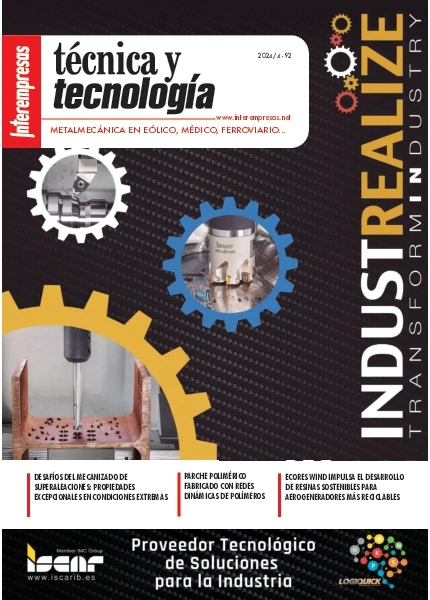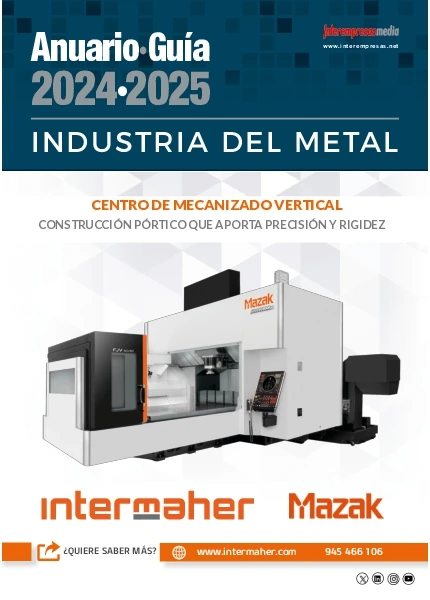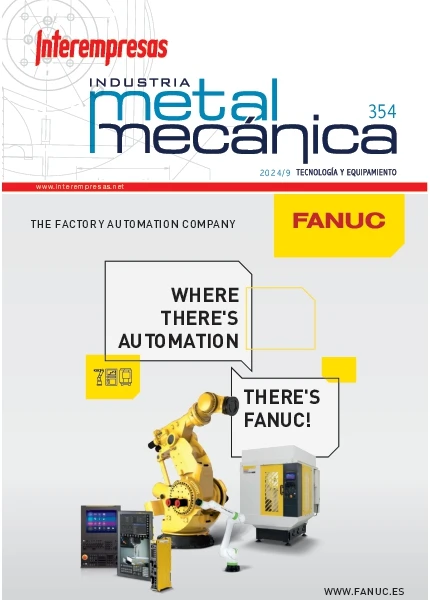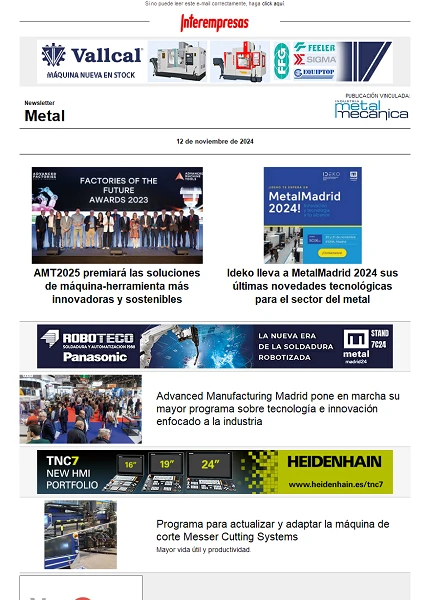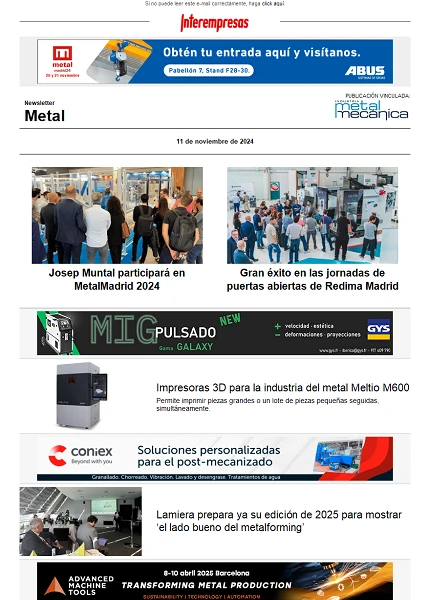Economic machining of modern lightweight materials
on June 14, 2011
The development of new aircraft is still marked by the weight and energy efficiency. But there is also an increasing use of lightweight materials in the automotive sector. Also, they have been imposed in the achievement of alternative energy through wind farms and are incorporated in the construction of machines, industrial robots or consumer goods sector to reduce the weight of the masses in motion.
The use of safe and efficient machining technologies is the indispensable requirement to extend the use of lightweight construction products made from composites fibres. This is not possible with the known manufacturing procedures and, above all with the familiar tools that should take into account the specific behavior to the machining of the lightweight materials. Both protrusion of fibers and fibers of the compound boot should be avoided. The de-lamination between different layers of fibers is also a definitive criterion for the piece of work and, therefore, for the plan of tools used.
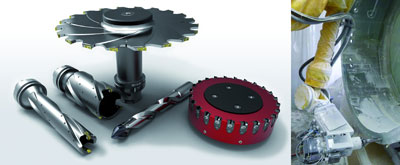
Also, too high temperatures of machining cause synthetic resins or plastics used in the work piece to experience an irreparable damage. Given that most of the time working in dry, the geometry of the tool cutting is particularly important, so correct interpretation requires special knowledge and a good understanding of the process. Plastics reinforced with carbon (CFRP) undoubtedly represent a special challenge, as causing extreme wear of the ridge. Different manufacturing processes, the different layers of fibers, variable cross sections of the fiber and resin content entail specific requirements that must be addressed with tools adapted designs.
Tools for drilling and milling materials reinforced with fibers
Mapal has developed solutions of tools to meet these specific requirements, especially for plastics reinforced with fibres sector. The program includes standard products in hard and solid, metal both without coating and coating of diamond, as well as equipped with polycrystalline diamond tools. Its product portfolio is completed by practical solutions particularly suited to the machining plan that include the appropriate tool.
The cleaning of the edges of cut is especially important in the milling of lightweight construction components. Cannot stand out fibers. Mapal has developed tools for milling for this application to facilitate machining in an only cut and pose an evident saving of time. This advantage is particularly evident in large series or very large components. With this program of strawberries plastics reinforced with fiberglass (GFRP) of different moldings can also be excellently machining.
Various CFRP structures were considered in the development of special drill bits of Mapal composite for CFRP materials. Thus, refers to the so-called CFRP materials unidirectional and multidirectional. The geometry of drill varies depending on the structure. Unidirectional layers of fibers in the output of the drilling hinder the realization of perforations without protruding fibers or creeks (peeling) in the emitting surface that surrounds the drilling. The very bright walls of the holes or to submit a glowing appearance indicate a fusion of the resin, and therefore too high process temperatures. The optimum combination between the geometry of the tip, the phase of cylindrical grinding and shavings channel configuration resulting in a drill which excludes the possibility of error in the work piece.
Machining of laminates of CFRP/titanium/aluminium (stacks)
Increased by the use of CFRP in the modern mounting structures and coatings, the new generation of aircraft uses titanium to the download and distribution of the forces. In the fuselage, these are areas of doors and gates, and on the wings, the areas of seat cargo engines, gear and the flaps for landing. The geometric specifications of the holes in these structural components of CFRP/titanium/aluminium subjected to heavy loads are very limited and often be achieved in a single phase of working with a high level of security during the process.
In the Centre of r & d of Mapal were developed and tested Special drills taking into consideration of machining processes. The result are tools that, in most different machines as drill units of advance, robots and machining centres, can perform drilling in the so-called 'stacks' in a single stage of work (oneshot) as H8. Tools working in titanium generating little heat in the process and producing short chips and prevent the deterioration of the contiguous composites fibres.
When you select the correct geometry of the drill bit, is of critical importance the composition of the stacks and direction of machining. Depending on the structure of layers of material and the diameter to conduct drilling or drilling tolerances, are particularly appropriate drills coated hard and solid metal tools or system of interchangeable heads. In general, the TTD system of interchangeable heads is available from a diameter of 12 mm.
Solutions of tools have been developed also for processes in two phases of perforated and subsequent excavation of a perforation. In the case of components which are extremely expensive, the safety of the machining passes to the foreground and applies the 'fail save' strategy (to test failures). The reamers Mapal multifilo (HPR) with sharp polycrystalline diamond working in all materials with absolute security of process and high longevity. With them are reached effortlessly IT7 tolerances in the most different materials, CFRP, aluminum or titanium.
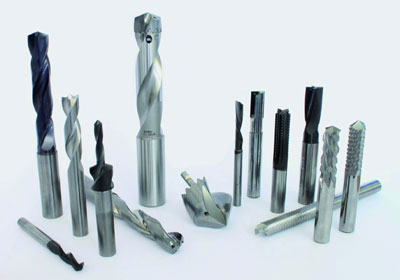
Complete machining of the connections of CFRP blades rotor of wind power plants
The structural design of the areas of connection between the blade of the rotor and the cube is one of the most demanding in the development missions of bladed rotor for wind power plants. Bolted assemblies that unite the rotor blade across the pad with the cube of the rotor are exposed to extreme dynamic loads. To reduce the weight of the rotor blade and reduce manufacturing costs, manufacturers often bet on so-called cross bolt connections. For economically machining operations of drilled, milling and cut necessary for such a procedure of Union in the connection of the blade of CFRP, Mapal has developed innovative systems of tools that are also optimized to reduce the formation of dust and shavings.
First cut the outstanding resin of the marginal zone of the root of the blade of the rotor. The used disc BUR, diameter = 400 mm and with 20 kilos of metal hard coated with 20 diamonds, allows to reduce machining times. The polished body reduces the formation of heat during machining. So there is no Court of sierra, as it was the case in traditional machining with diamond saw blades or tronzadoras teeth, and any type of grinding is superfluous. However, after the court usually give a finish to the surface of connection to the cube of the rotor with a strawberry to equipped with polycrystalline diamond plan to achieve a better surface quality.
The machining of the longitudinal and transverse holes for bolts of subject is made with a drill bit sacamuestras with sharp diamond-covered. They have a great longevity and prevent also the peeling at the start of the drilling. Thanks to the small volume of shavings, even in large diameters of machining, the formation of dust and shavings is significantly reduced compared to solid drill bits. For drilling of interlocking for the alignment of the wing, on the machine of machining comes a TTD of interchangeable heads drill whose geometry was optimized for the demands of the machining of GFRP. The finish as a system of interchangeable heads makes especially economic machining of 32 mm diameters.


